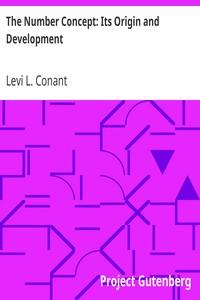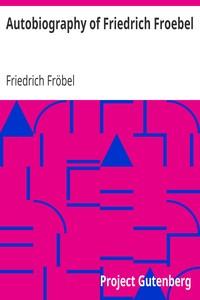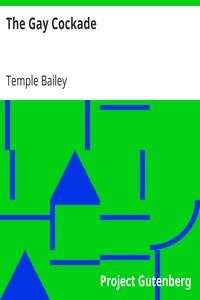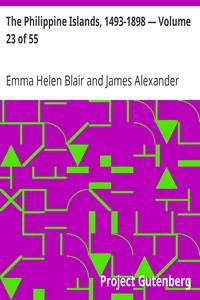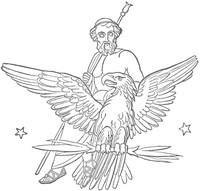|
|
Read this ebook for free! No credit card needed, absolutely nothing to pay.Words: 20696 in 11 pages
This is an ebook sharing website. You can read the uploaded ebooks for free here. No credit cards needed, nothing to pay. If you want to own a digital copy of the ebook, or want to read offline with your favorite ebook-reader, then you can choose to buy and download the ebook.

: The Number Concept: Its Origin and Development by Conant Levi L Levi Leonard - Number concept Mathematics@FreeBooksTue 06 Jun, 2023 g possible. A little higher in the intellectual scale, among the American Indians, for example, they are employed merely as an artificial aid to what could be done by mental effort alone. Finally, among semi-civilized and civilized peoples, the same processes are retained, and form a part of the daily life of almost every person who has to do with counting, reckoning, or keeping tally in any manner whatever. They are no longer necessary, but they are so convenient and so useful that civilization can never dispense with them. The use of the abacus, in the form of the ordinary numeral frame, has increased greatly within the past few years; and the time may come when the abacus in its proper form will again find in civilized countries a use as common as that of five centuries ago. In the elaborate calculating machines of the present, such as are used by life insurance actuaries and others having difficult computations to make, we have the extreme of development in the direction of artificial aid to reckoning. But instead of appearing merely as an extraneous aid to a defective intelligence, it now presents itself as a machine so complex that a high degree of intellectual power is required for the mere grasp of its construction and method of working. NUMBER SYSTEM LIMITS. Taken as a whole, the Australian and Tasmanian tribes seem to have been distinctly inferior to those of South America in their ability to use and to comprehend numerals. In all but two or three cases the Tasmanians were found to be unable to proceed beyond 2; and as the foregoing examples have indicated, their Australian neighbours were but little better off. In one or two instances we do find Australian numeral scales which reach 10, and perhaps we may safely say 20. One of these is given in full in a subsequent chapter, and its structure gives rise to the suspicion that it was originally as limited as those of kindred tribes, and that it underwent a considerable development after the natives had come in contact with the Europeans. There is good reason to believe that no Australian in his wild state could ever count intelligently to 7. Aside from the specific examples already given, a considerable number of sweeping generalizations may be made, tending to show how rudimentary the number sense may be in aboriginal life. Scores of the native dialects of Australia and South America have been found containing number systems but little more extensive than those alluded to above. The negro tribes of Africa give the same testimony, as do many of the native races of Central America, Mexico, and the Pacific coast of the United States and Canada, the northern part of Siberia, Greenland, Labrador, and the arctic archipelago. In speaking of the Eskimos of Point Barrow, Murdoch says: "It was not easy to obtain any accurate information about the numeral system of these people, since in ordinary conversation they are not in the habit of specifying any numbers above five." Counting is often carried higher than this among certain of these northern tribes, but, save for occasional examples, it is limited at best. Dr. Franz Boas, who has travelled extensively among the Eskimos, and whose observations are always of the most accurate nature, once told the author that he never met an Eskimo who could count above 15. Their numerals actually do extend much higher; and a stray numeral of Danish origin is now and then met with, showing that the more intelligent among them are able to comprehend numbers of much greater magnitude than this. But as Dr. Boas was engaged in active work among them for three years, we may conclude that the Eskimo has an arithmetic but little more extended than that which sufficed for the Australians and the forest tribes of Brazil. Early Russian explorers among the northern tribes of Siberia noticed the same difficulty in ordinary, every-day reckoning among the natives. At first thought we might, then, state it as a general law that those races which are lowest in the scale of civilization, have the feeblest number sense also; or in other words, the least possible power of grasping the abstract idea of number. But to this law there are many and important exceptions. The concurrent testimony of explorers seems to be that savage races possess, in the great majority of cases, the ability to count at least as high as 10. This limit is often extended to 20, and not infrequently to 100. Again, we find 1000 as the limit; or perhaps 10,000; and sometimes the savage carries his number system on into the hundreds of thousands or millions. Indeed, the high limit to which some savage races carry their numeration is far more worthy of remark than the entire absence of the number sense exhibited by others of apparently equal intelligence. If the life of any tribe is such as to induce trade and barter with their neighbours, a considerable quickness in reckoning will be developed among them. Otherwise this power will remain dormant because there is but little in the ordinary life of primitive man to call for its exercise. In giving 1, 2, 3, 5, 10, or any other small number as a system limit, it must not be overlooked that this limit mentioned is in all cases the limit of the spoken numerals at the savage's command. The actual ability to count is almost always, and one is tempted to say always, somewhat greater than their vocabularies would indicate. The Bushman has no number word that will express for him anything higher than 2; but with the assistance of his fingers he gropes his way on as far as 10. The Veddas, the Andamans, the Guachi, the Botocudos, the Eskimos, and the thousand and one other tribes which furnish such scanty numeral systems, almost all proceed with more or less readiness as far as their fingers will carry them. As a matter of fact, this limit is frequently extended to 20; the toes, the fingers of a second man, or a recount of the savage's own fingers, serving as a tale for the second 10. Allusion is again made to this in a later chapter, where the subject of counting on the fingers and toes is examined more in detail. In saying that a savage can count to 10, to 20, or to 100, but little idea is given of his real mental conception of any except the smallest numbers. Want of familiarity with the use of numbers, and lack of convenient means of comparison, must result in extreme indefiniteness of mental conception and almost entire absence of exactness. The experience of Captain Parry, who found that the Eskimos made mistakes before they reached 7, and of Humboldt, who says that a Chayma might be made to say that his age was either 18 or 60, has been duplicated by all investigators who have had actual experience among savage races. Nor, on the other hand, is the development of a numeral system an infallible index of mental power, or of any real approach toward civilization. A continued use of the trading and bargaining faculties must and does result in a familiarity with numbers sufficient to enable savages to perform unexpected feats in reckoning. Among some of the West African tribes this has actually been found to be the case; and among the Yorubas of Abeokuta the extraordinary saying, "You may seem very clever, but you can't tell nine times nine," shows how surprisingly this faculty has been developed, considering the general condition of savagery in which the tribe lived. There can be no doubt that, in general, the growth of the number sense keeps pace with the growth of the intelligence in other respects. But when it is remembered that the Tonga Islanders have numerals up to 100,000, and the Tembus, the Fingoes, the Pondos, and a dozen other South African tribes go as high as 1,000,000; and that Leigh Hunt never could learn the multiplication table, one must confess that this law occasionally presents to our consideration remarkable exceptions. THE ORIGIN OF NUMBER WORDS. The scope of the present work will admit of no more than a hasty examination of numeral forms, in which only actual and well ascertained meanings will be considered. But here we are at the outset confronted with a class of words whose original meanings appear to be entirely lost. They are what may be termed the numerals proper--the native, uncompounded words used to signify number. Such words are the one, two, three, etc., of English; the eins, zwei, drei, etc., of German; words which must at some time, in some prehistoric language, have had definite meanings entirely apart from those which they now convey to our minds. In savage languages it is sometimes possible to detect these meanings, and thus to obtain possession of the clue that leads to the development, in the barbarian's rude mind, of a count scale--a number system. But in languages like those of modern Europe, the pedigree claimed by numerals is so long that, in the successive changes through which they have passed, all trace of their origin seems to have been lost. More rarely yet are instances met with of languages which make use of subtraction almost as freely as addition, in the composition of numerals. Within the past few years such an instance has been noticed in the case of the Bellacoola language of British Columbia. In their numeral scale 15, "one foot," is followed by 16, "one man less 4"; 17, "one man less 3"; 18, "one man less 2"; 19, "one man less 1"; and 20, one man. Twenty-five is "one man and one hand"; 26, "one man and two hands less 4"; 36, "two men less 4"; and so on. This method of formation prevails throughout the entire numeral scale. One of the best known and most interesting examples of subtraction as a well-defined principle of formation is found in the Maya scale. Up to 40 no special peculiarity appears; but as the count progresses beyond that point we find a succession of numerals which one is almost tempted to call 60 - 19, 60 - 18, 60 - 17, etc. Literally translated the meanings seem to be 1 to 60, 2 to 60, 3 to 60, etc. The point of reference is 60, and the thought underlying the words may probably be expressed by the paraphrases, "1 on the third score, 2 on the third score, 3 on the third score," etc. Similarly, 61 is 1 on the fourth score, 81 is one on the fifth score, 381 is 1 on the nineteenth score, and so on to 400. At 441 the same formation reappears; and it continues to characterize the system in a regular and consistent manner, no matter how far it is extended. Free books android app tbrJar TBR JAR Read Free books online gutenberg More posts by @FreeBooks
: Autobiography of Friedrich Froebel $c translated and annotated by Emilie Michaelis ... and H. Keatley Moore. by Fr Bel Friedrich Michaelis Emilie Translator Moore Henry Keatley Translator - Fröbel Friedrich 1782-1852@FreeBooksTue 06 Jun, 2023

: The Gay Cockade by Bailey Temple Chambers C E Illustrator - Short stories@FreeBooksTue 06 Jun, 2023

: The Philippine Islands 1493-1898 — Volume 23 of 55 1629-30 Explorations by early navigators descriptions of the islands and their peoples their history and records of the Catholic missions as related in contemporaneous books and manuscripts showing the@FreeBooksTue 06 Jun, 2023
|
Terms of Use Stock Market News! © gutenberg.org.in2025 All Rights reserved.

